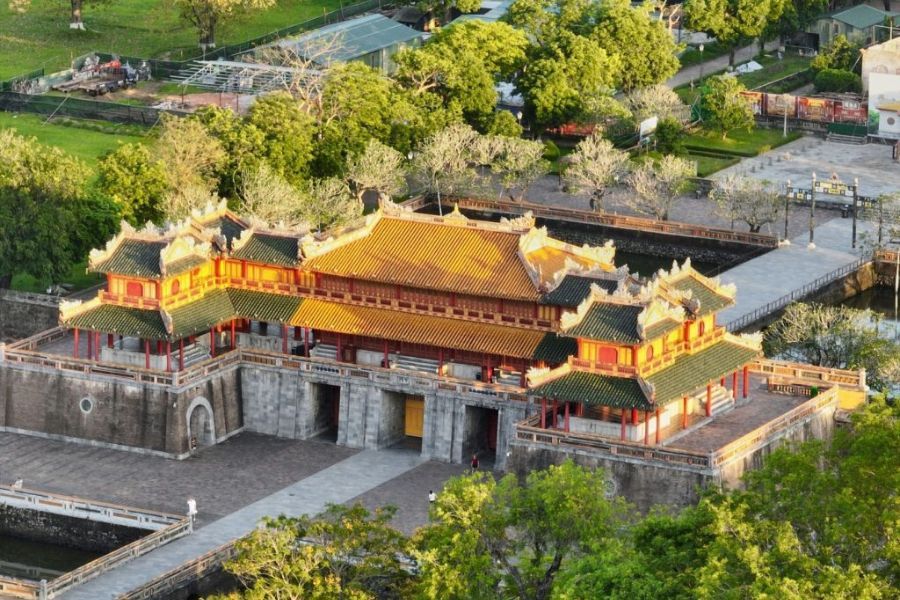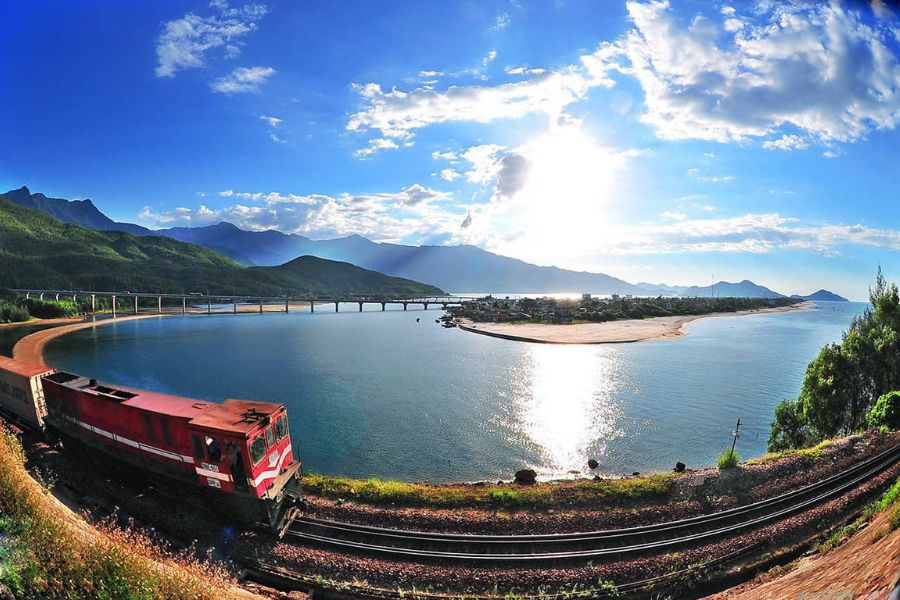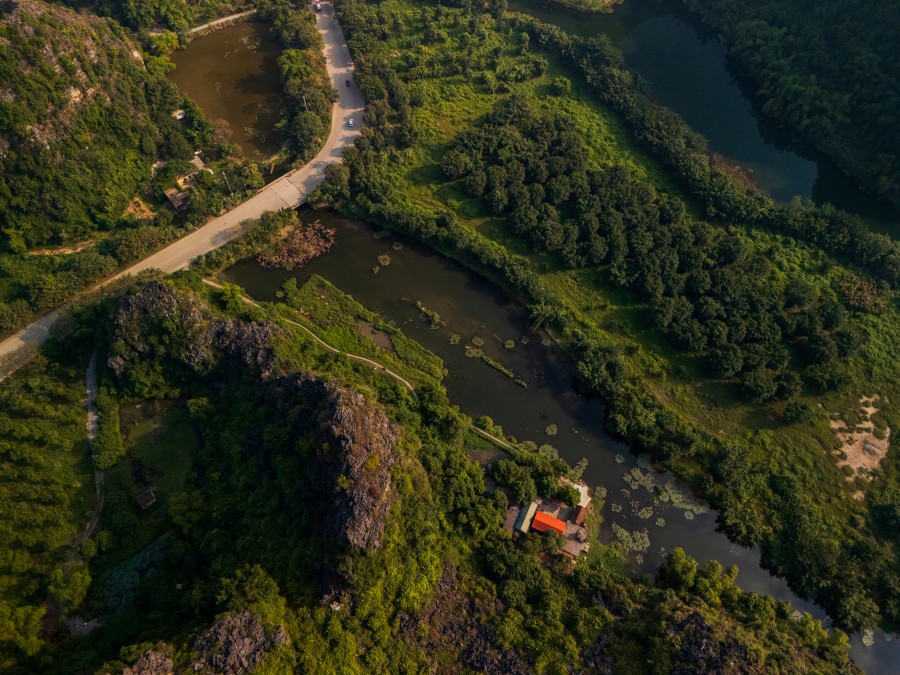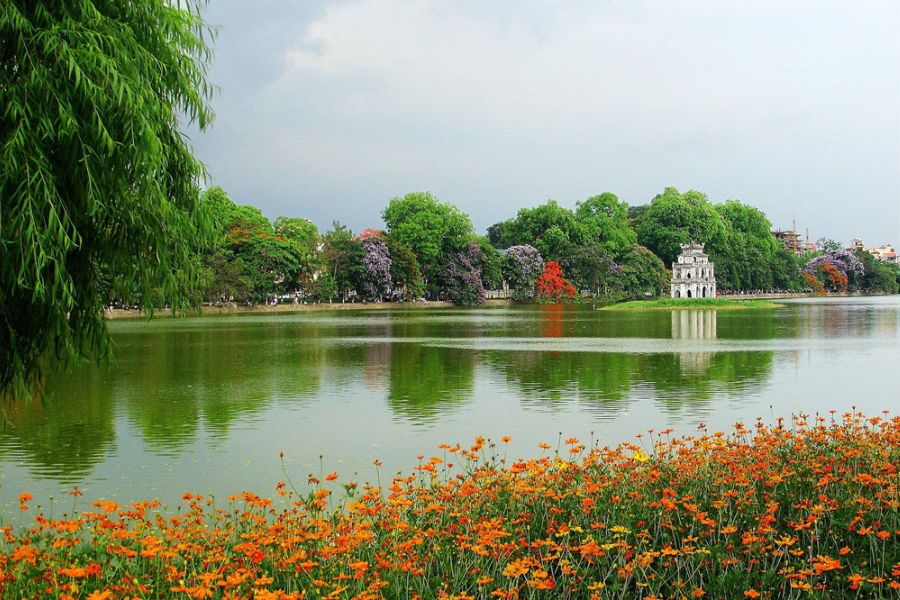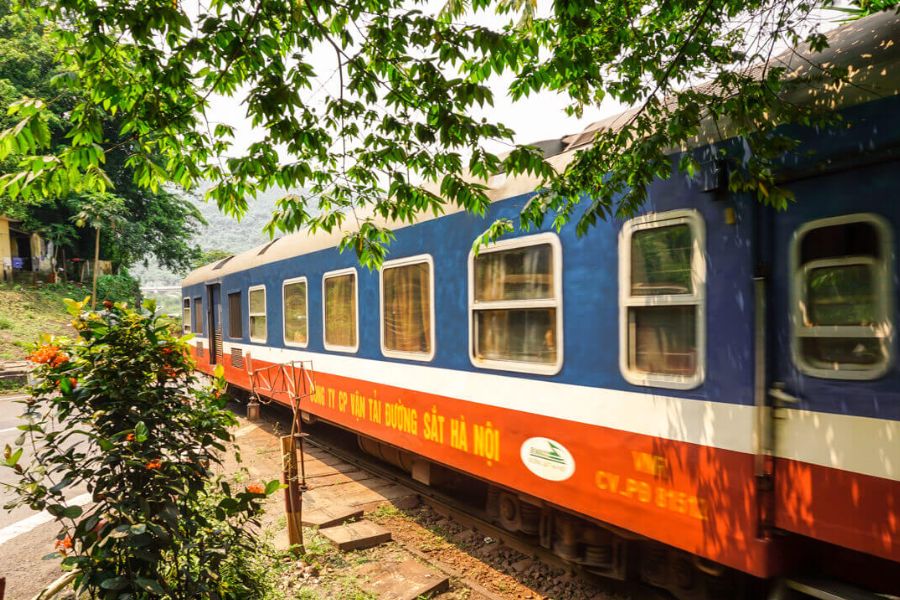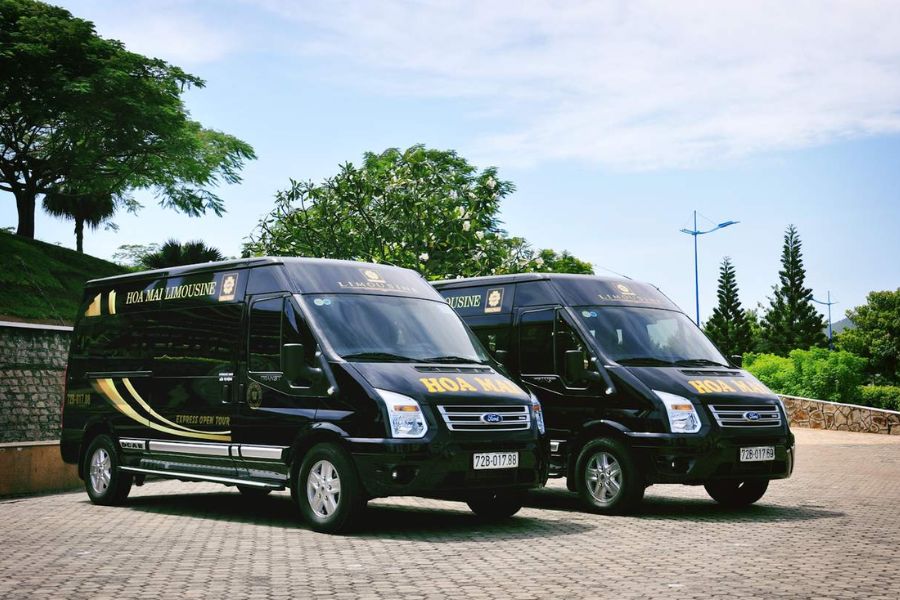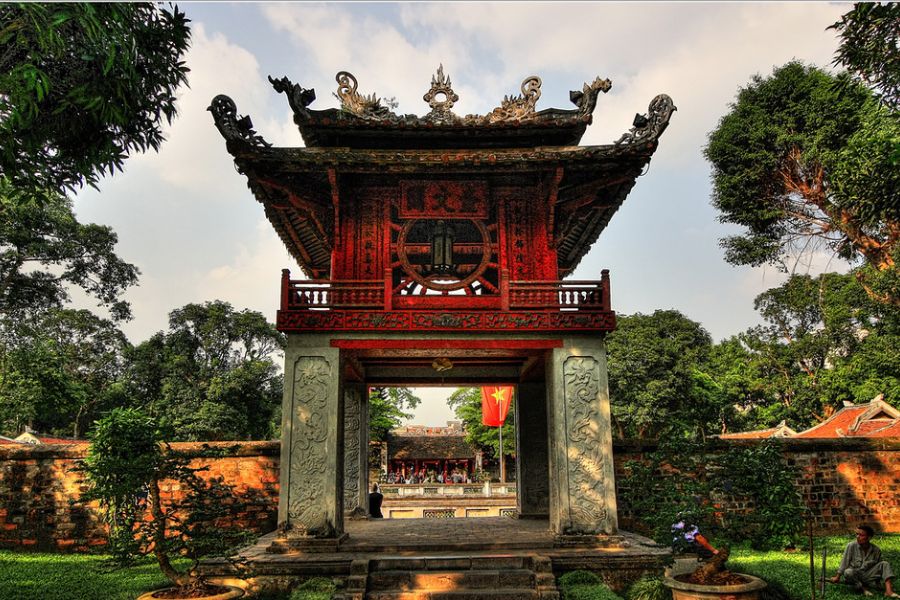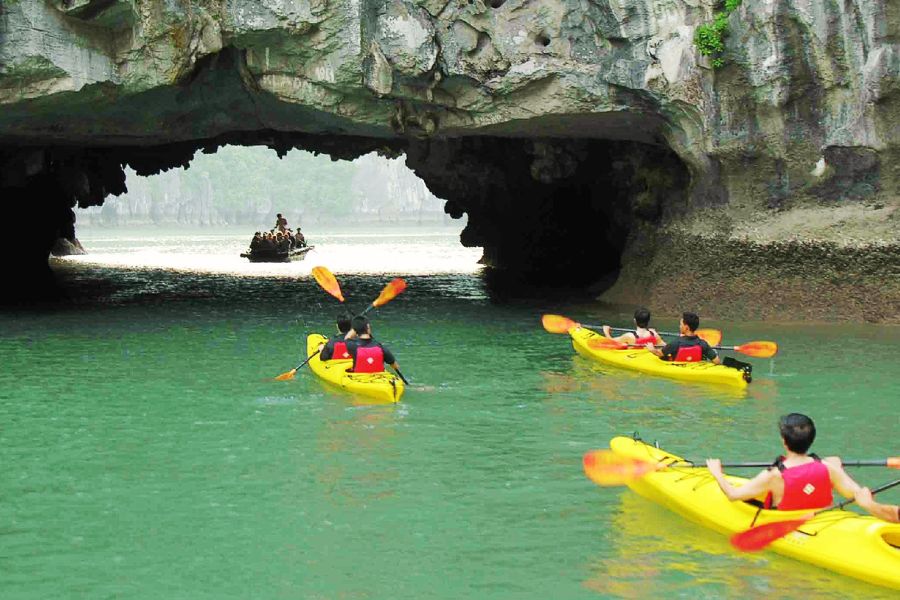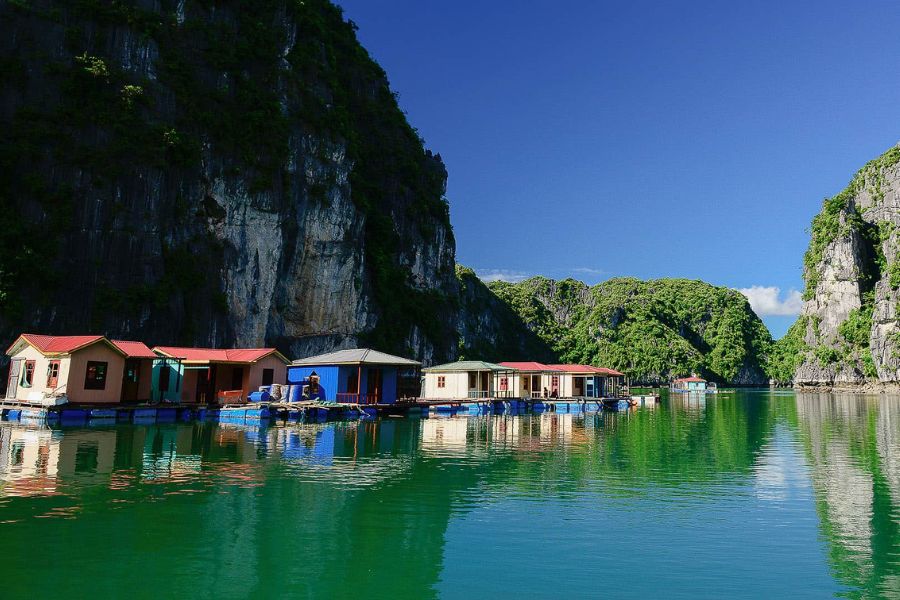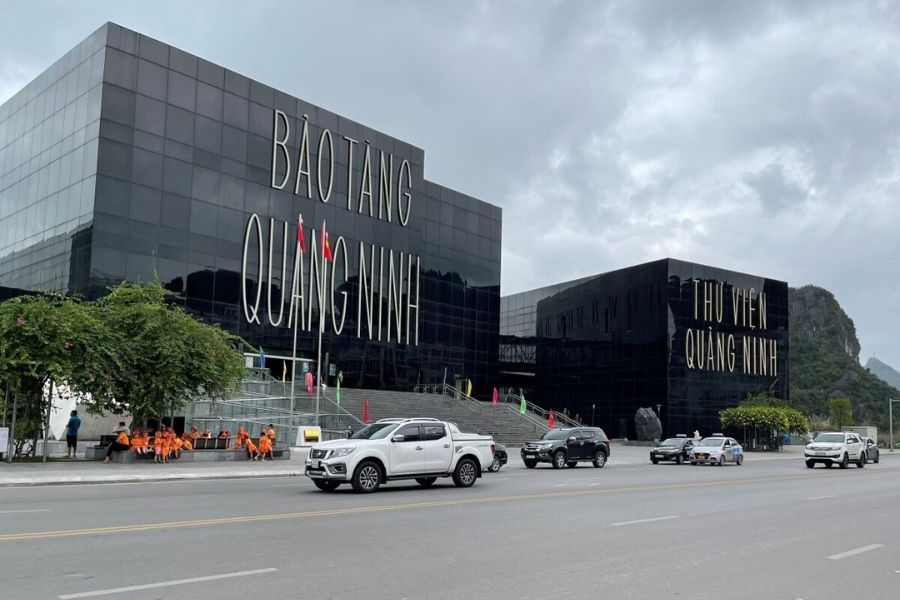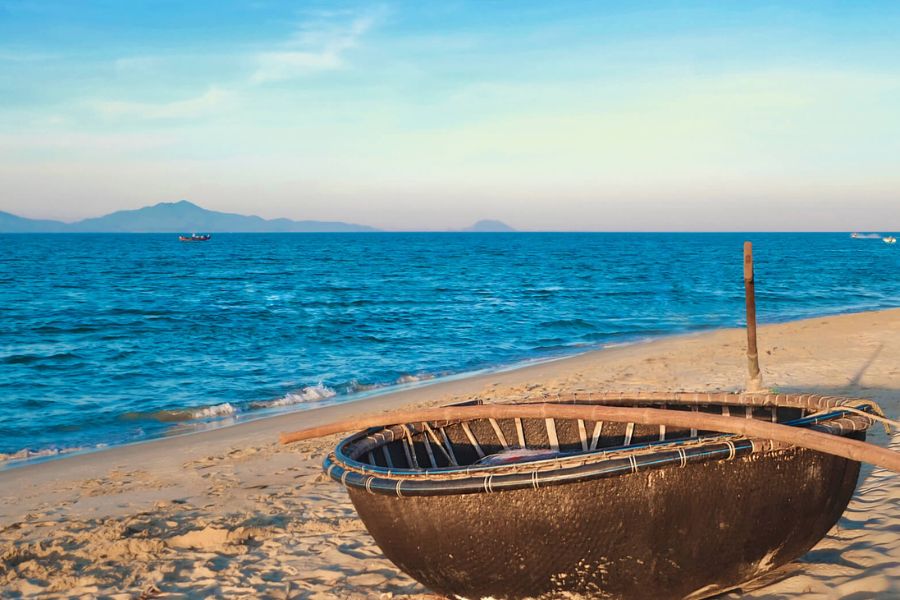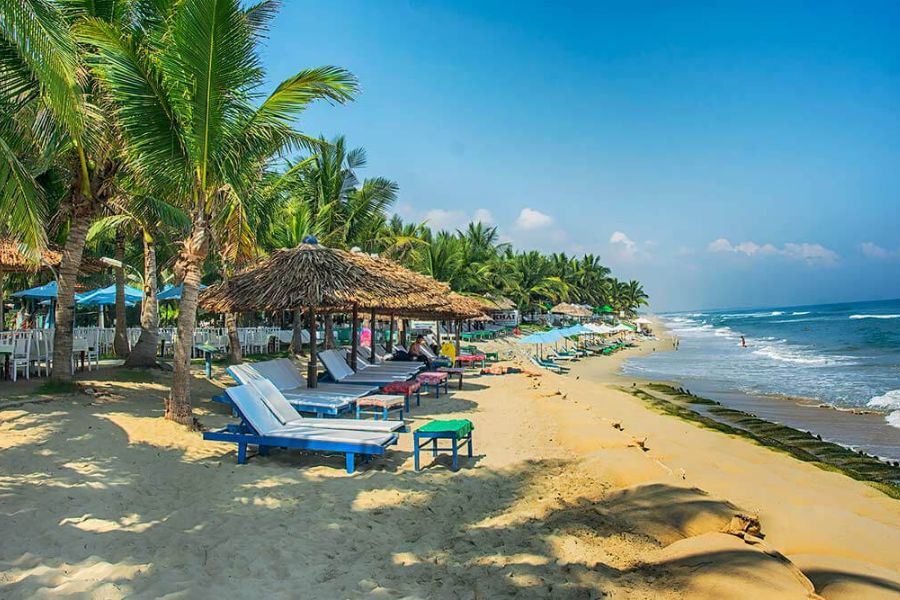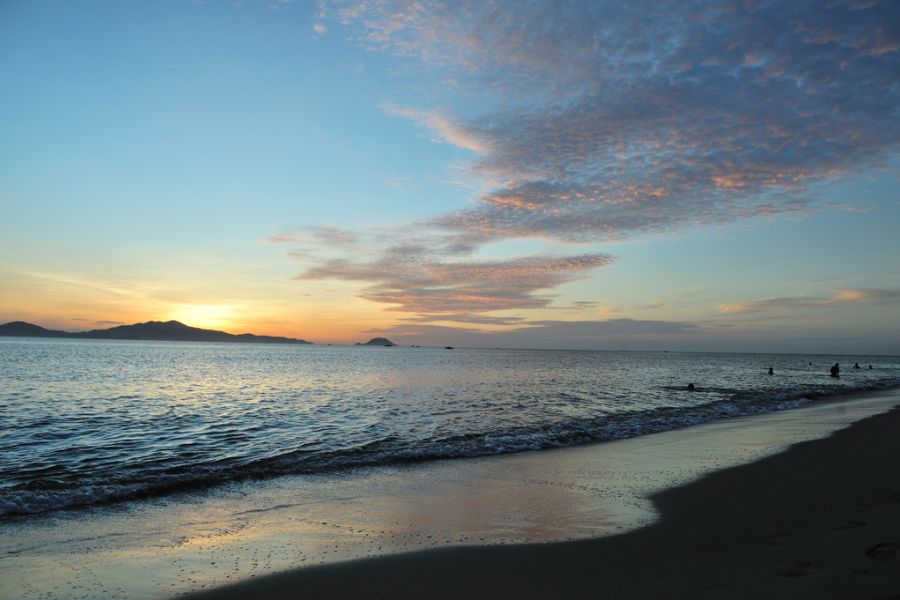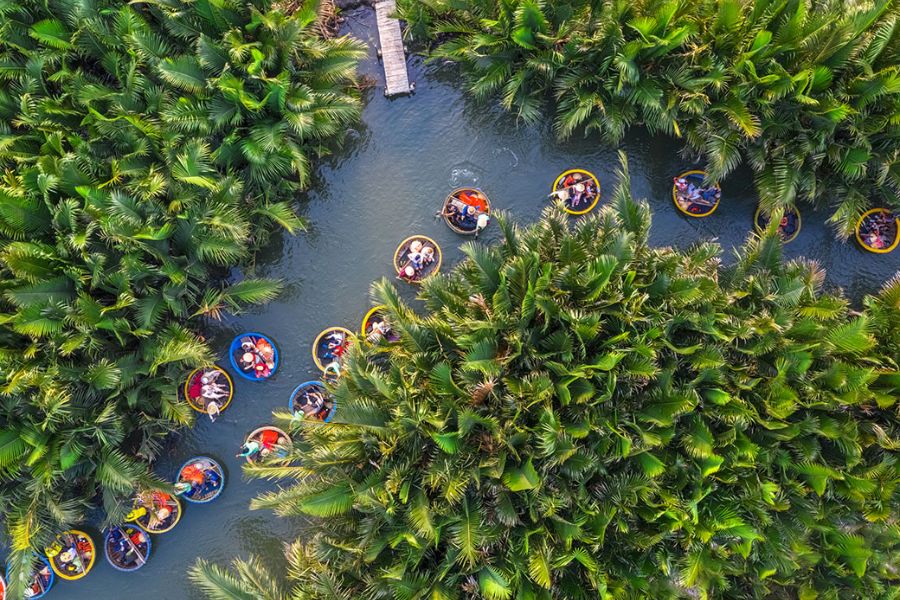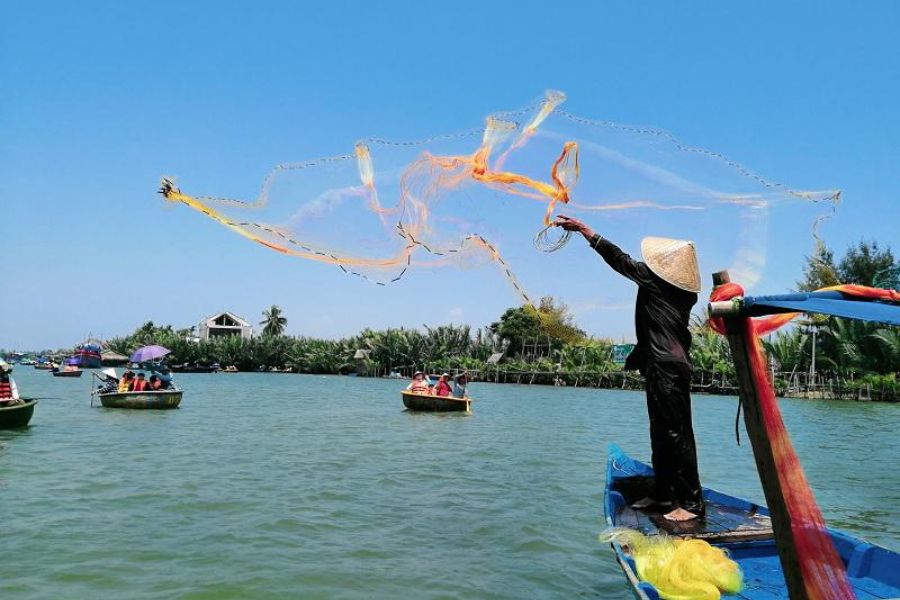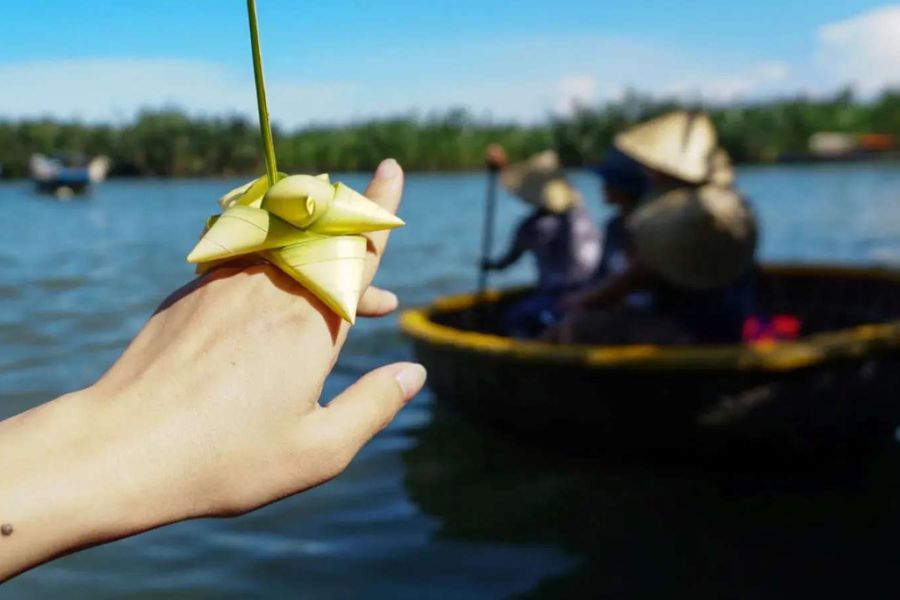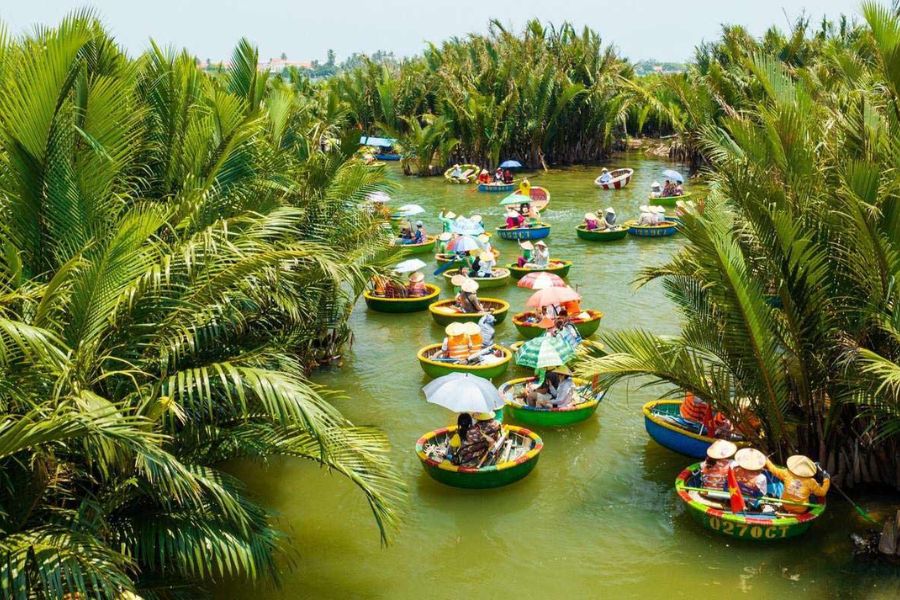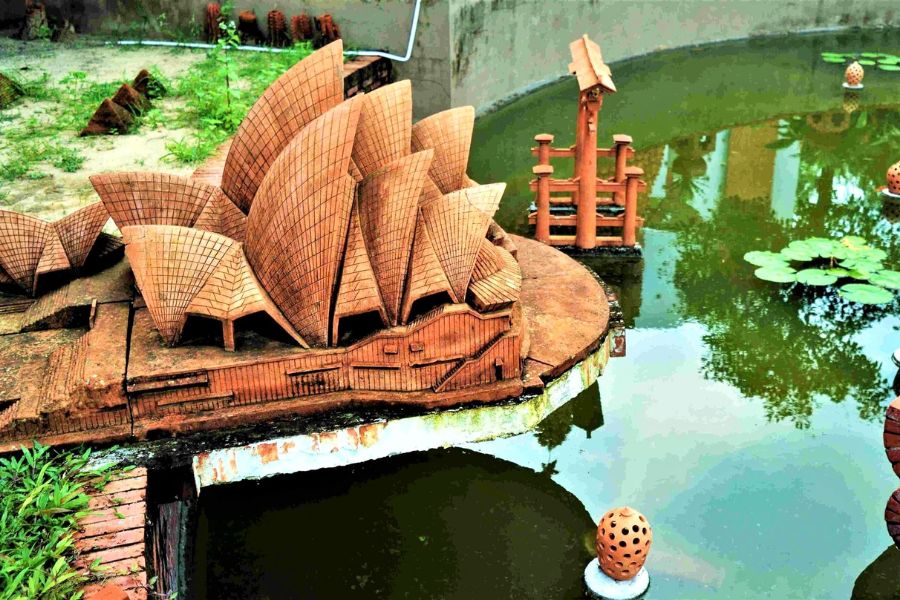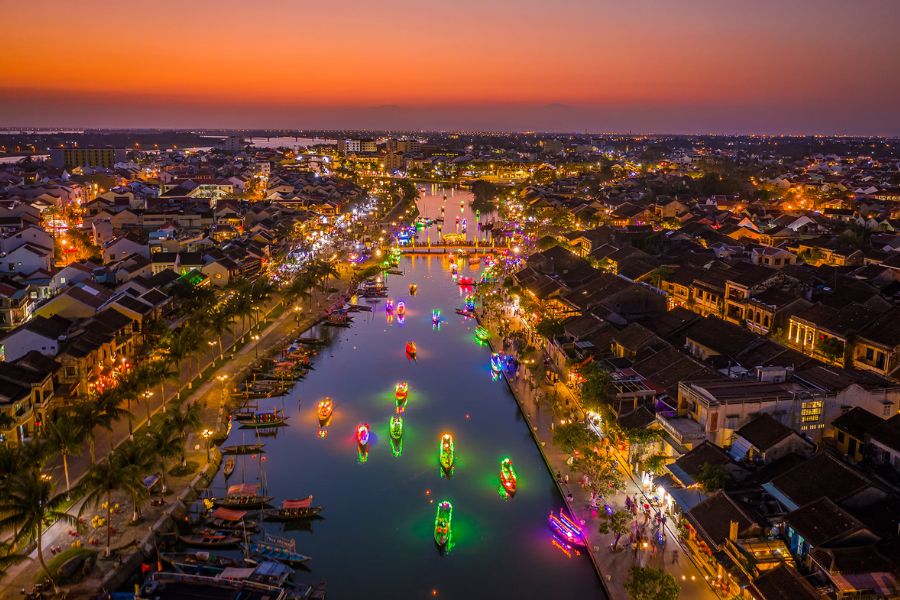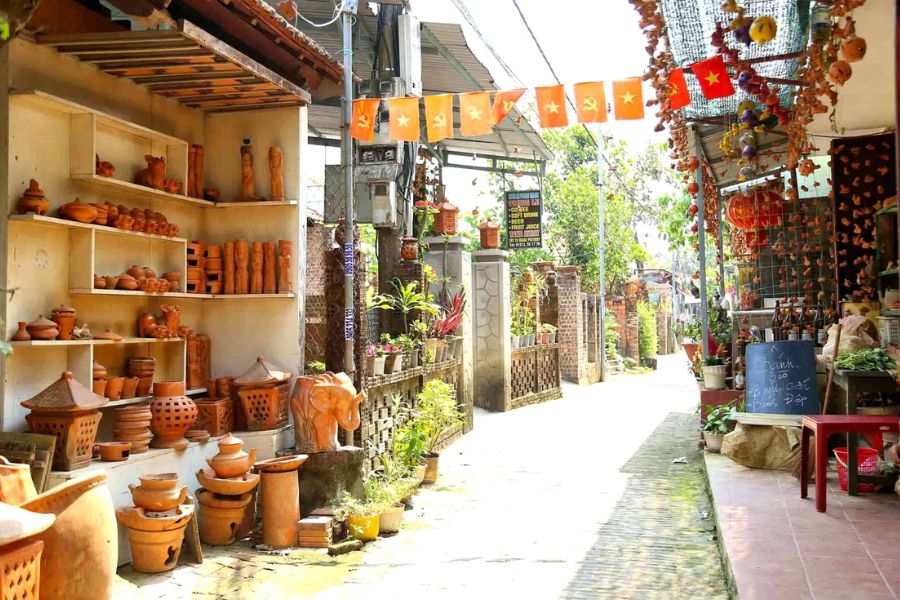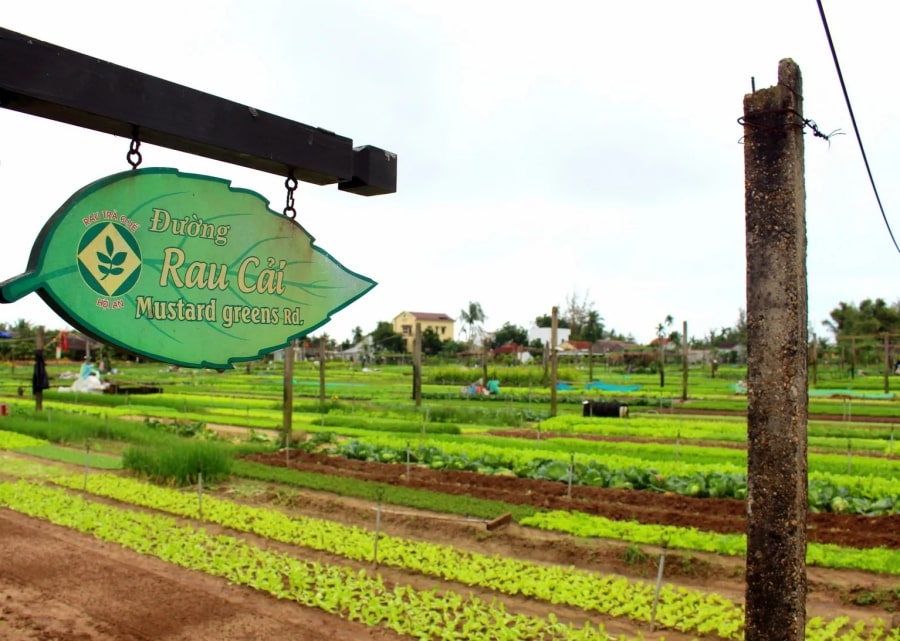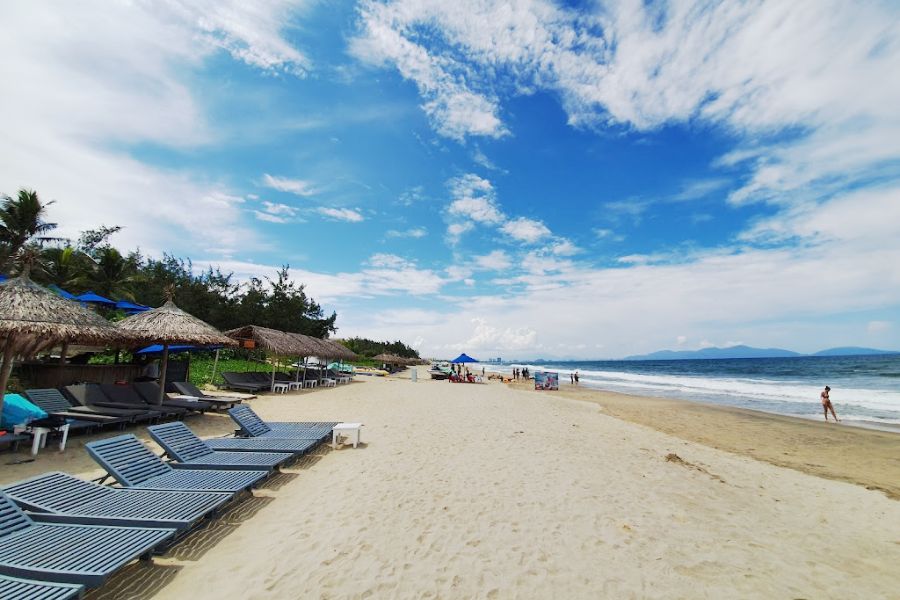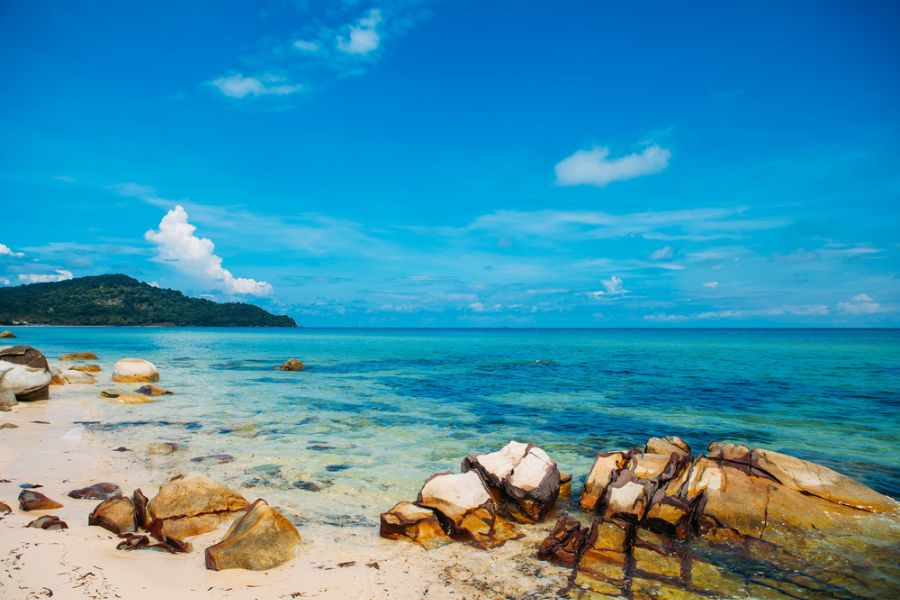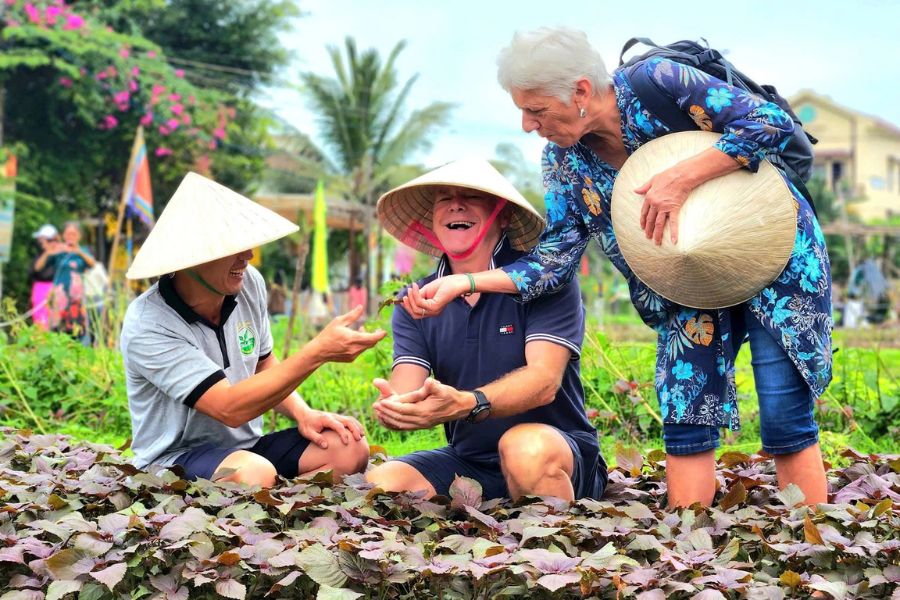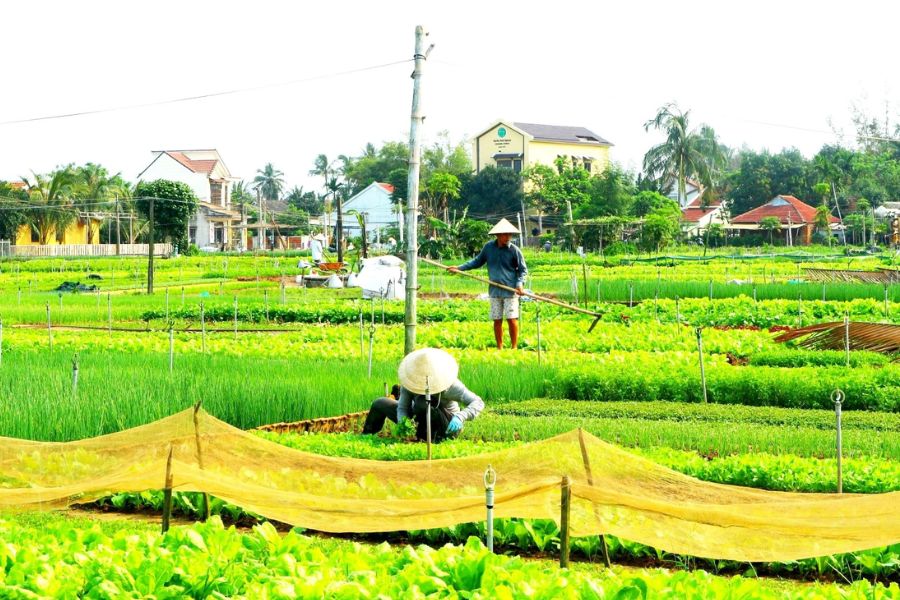Halong Bay To Da Nang: Natural Scenery And Dynamic Lifestyle
There are many ways for you to travel from Halong Bay to Da Nang, like motorbike, bus, minivan, private car, train, plane, and cruise. Depending on your favorite, demand, and budget, select the right way to have a wonderful journey.
Overview Of Halong Bay To Da Nang
Many travelers choose to mix Halong Bay and Da Nang because these destinations showcase the diverse beauty and impressive stories of Vietnam. Halong Bay is a UNESCO World Heritage site and gives a serene, mystical, and natural marvel, with its iconic great limestone karsts and peaceful emerald waters.
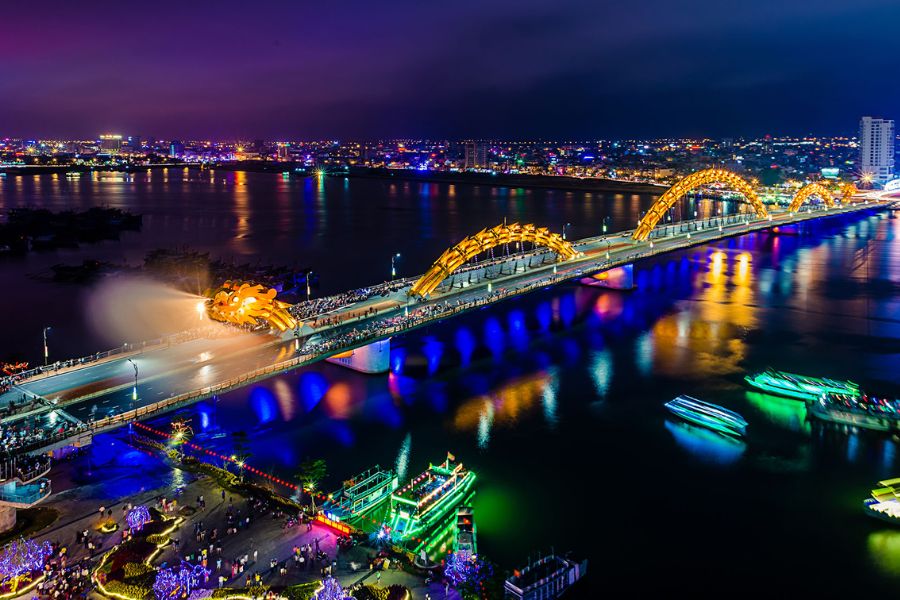
Da Nang is an energetic and modern coastal city in Vietnam, with proudly long sandy seashores like My Khe, and ancient gems like Hoi An historical city and the imperial town of Hue. This mixture lets vacationers revel in the breathtaking geological marvels of the Northern and the dynamic coastal lifestyle in Central Vietnam
How Far Is It From Halong Bay To Da Nang?
The approximate Halong Bay to Da Nang distance in a straight line (air) is around 550 to 600 kilometers, but the street distance is about 800 to 900 kilometers. With the distance above, the travel time from Halong Bay to Da Nang is about 3 to 6 days (by motorbike), from 14 to 19 hours (by bus or minivan), about 13 to 15 hours (by private car), from 14 – 15 hours (by train), about 1 hour and 20 minutes (by plane), and about 3 to 5 days (by cruise).
How To Travel From Halong Bay To Da Nang?
Traveling from Halong Bay to Da Nang, you can use many types of transportation. In this section of this blog, Seni World will show you how to get from Halong Bay to Da Nang.
By Motorbike
Journeying from Halong Bay to Da Nang by motorbike, you will explore Vietnam’s wonderful coastal roads, beautiful hidden villages, and scenic natural attractions at your own pace. However, this adventure is over 800 kilometers, physically demanding, and probably dangerous because of varying terrain situations and climate changes. It additionally requires careful planning, many stops, and an excellent level of riding experience.
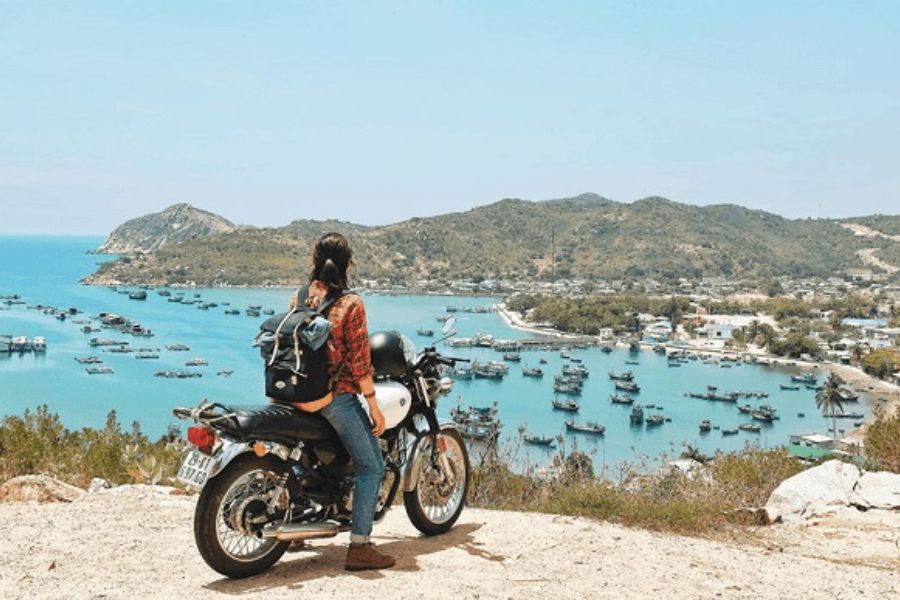
| Aspect | Details |
| Route | Option 1 (QL1A or the coastal route): Halong Bay → Uong Bi → Hai Phong → Thai Binh → Ninh Binh → Thanh Hoa → Vinh → Ha Tinh → Dong Hoi → Dong Ha → Hue → Da Nang. This is the most direct route for travelers, which is along the coast and national highway, and saves time.
Option 2 (QL15 or the Ho Chi Minh Highway): Halong Bay → Hanoi → Hoa Binh → Thanh Hoa → Nghe An → Phong Nha → Khe Sanh → Hue → Da Nang. This is the inland route, which brings travelers beautiful mountainous views, fewer vehicles, and many cultural attractions. |
| Distance | QL1A: About 850 – 950 kilometers.
QL15: Around 950 – 1,050+ kilometers, depending on detours and sightseeing. |
| Travel Time | The adventure from Halong Bay to Da Nang by motorbike commonly needs a 3-day to 6-day selection:
|
| Suggested Stop | For a 3-4 day trip on the QL1A route:
For a 5-6+ days trip on the QL15 route:
|
By Bus Or Minivan
The Halong Bay to Da Nang bus or minivan trip is a budget-friendly and relatively convenient choice for travelers. They normally consist of inn pick-up, air-conditioning, and some scheduled rest stops, making the journey comfortable. This is also a fantastic way to learn more about Vietnam’s nation-state in this manner.

| Vehicle Type | Price (VND) | Travel Time | Notes |
| Sleeper Bus | About 550,000 – 750,000 VND (per person) | About 16 – 18 hours | This is a low-priced selection with a basic sleeping berth, which is suitable for solo travelers or backpackers looking to save money. However, amenities will be limited. |
| VIP Sleeper Bus | About 650,000 – 900,000 VND (per person) | About 15 – 17 hours | VIP sleeper bus has larger and more comfortable berths for travelers. It has fewer passengers and some additional amenities, consisting of bottled water and more scenic stopovers. |
| Limousine Minivan | About 900,000 – 1,300,000 VND (per person) | About 14 – 16 hours | Limousine minivan brings travelers a premium and quicker experience with senior-level seats, USB charging ports, and especially, accommodation pick-up and drop-off options. |
| Tourist Bus | About 550,000 – 850,000 VND (per person) | About 16 – 19 hours | A tourist bus is commonly selected for its affordability. It includes basic hotel pick-up and drop-off, and stops for meals. |
By Private Car
You can go from Halong Bay to Da Nang by private car, which has the highest level of convenience, privacy, and flexibility. You can freely personalize your Northern to Central Vietnam itinerary, take scenic stops along the way, and journey at your own pace. With a door-to-door carrier and a large area for baggage, a private car offers a clean and customized tour, although it has a higher price in comparison to buses or trains.

| Car Type | Estimated Price (VND) | Travel Time | Best For |
| 4-Seater Car | About 6,500,000 – 7,500,000 VND | About 13 – 15 hours | Solo vacationers or couples who want to have flexibility, privacy, and comfort. |
| 7-Seater Car | About 7,000,000 – 8,000,000 VND | About 13 – 15 hours | Small families or communities needing more larger space, direct movement, and flexible travel. |
| 16-Seater Van | About 8,000,000 – 9,000,000 VND | About 13 – 15 hours | This is the best transportation for large groups or tour parties with more bags and luggage. |
| Luxury SUV | About 8,500,000 – 10,000,000 VND | About 13 – 14 hours | Business tourists or luxury travelers who want to enjoy premium service, modern amenities, and comfort. |
By Train
Halong Bay to Da Nang train adventure gives a scenic and cozy journey through Vietnam’s various landscapes, from captivating coastal perspectives to brilliant rural countryside. Trains are cheap for those in search of a more genuine local experience, but they still save money. Although there is no direct train from Halong Bay to Da Nang, you can easily switch to Hanoi station and then go to Da Nang.

| Cabin Type | Estimated Price (VND) | Travel Time | Required Documents | Best For |
| Soft Seat | About 350,000 – 500,000 VND | About 14 – 15 hours | Passport (global travelers) or ID card (Vietnamese travelers) | This type of vehicle is a budget-friendly option for both local people and travelers who want to save money but still need basic comfort. |
| Hard Sleeper (6-Berth Cabin) | About 400,000 – 600,000 VND | About 14 – 15 hours | It is a wonderful choice for budget travelers needing to lie down comfortably during the long adventure. | |
| Soft Sleeper (4-Berth Cabin) | About 650,000 – 850,000 VND | About 14 – 15 hours | The soft sleeper one is perfect for small families or groups who want to feel more comfort, privacy, as well as rest during the journey. | |
| VIP Sleeper (2-Berth Cabin) | About 1,000,000 – 1,500,000 VND | About 14 – 15 hours | Couples or senior travelers seeking premium and luxurious comfort and the highest level of privacy. |
By Plane
Travelling from Halong Bay to Da Nang by plane is the fastest and the max of time-efficient choice, ideal for those with limited travel days. You will go from Halong Bay to Hanoi and afterward, take a direct flight to Da Nang. Flying offers speed and comfort, and frequent daily departures from multiple airlines.

| Aspect | Details |
| Flight Duration | About 1 hour and 20 minutes (not including the transfer time from Halong Bay to Noi Bai International Airport). |
| Airlines | Vietnam Airlines, Vietjet Air, or Bamboo Airways. |
| Airport in Halong Bay | There is no airport in Halong Bay, so if travelers want to travel from Halong Bay to Hue by plane, it is usually transfer by car or bus (from 2.5 to 3.5 hours) to Noi Bai International Airport (HAN) in Hanoi. |
| Airport in Hue | Da Nang International Airport (DAD). |
| Estimated Price (VND) | 800,000 – 1,800,000+ VND (depends on each airline’s promotion, booking time, and the peak season). |
| Best For | The Halong Bay to Da Nang flight is a great choice for travelers with limited time who want to have the quickest travel option with comfortable experiences. |
| Required Documents | Passport (global travelers) or ID card (Vietnamese travelers). |
By Cruise
Halong Bay to Da Nang cruise trip brings a luxurious enjoyment for vacationers who enjoy gradual travel and need to discover Vietnam’s coastline in style. This type of transportation allows you to loosen up while taking part in panoramic seaside and cultural experiences without the pressure of a road or air journey.

| Aspect | Details |
| Duration | About 3 – 5 days (depending on the Da Nang and Halong Bay itinerary, as well as stops along the central coast). |
| Estimated Price (VND) | 10,000,000 – 35,000,000+ VND per person (varies by cruise brand, the type of cabin, and included services). |
| Departure Port | Tuan Chau International Marina or Hon Gai Port in Halong Bay. |
| Arrival Port | Tien Sa Port in Da Nang. |
| Cruise Lines | Some global and luxurious cruises, including Orchid Cruises, Heritage Cruises, and seasonal agency lines. |
| Inclusions | Meals, on-board entertainment, guided excursions, lodgings, and sometimes the spa service. |
| Best For | High-end travelers or tourists who want to have a beautiful, slow-paced, and all-inclusive coastal adventure from Halong Bay to Da Nang. |
| Required Documents | Passport (global travelers) or ID card (Vietnamese travelers). |
Tips For Traveling From Halong Bay To Da Nang
If you want to have an interesting, happy, and safe trip from Halong Bay to Da Nang, you need to learn more about the travel tips in this adventure. Seni World has collected them for you to have an attractive journey.
- Book tickets in advance: Particularly in case you travel in the peak seasons or holidays, you need to book the tickets well in advance to ensure better prices and availability.
- Bring essential items for an overnight trip: If you choose buses or trains, don’t forget to pack snacks, water, a neck pillow, an eye mask, earplugs, as well as a light blanket or shawl to have a comfortable sleep.

- Protect your belongings carefully: Remember to keep your valuables like your passport, money, or ID card,… close and carefully, especially when you share cabins on vehicles.
- Learn basic Vietnamese phrases: A few simple and easy Vietnamese phrases can help you to communicate with local people and drivers, because some people can not speak English.
Final Thoughts
Traveling from Halong Bay to Da Nang, you can choose various types of transportation, which will depend on your preferences, demand, and budget. If you want to know the best time to visit Halong Bay to Da Nang and receive support for the visa process, let’s contact Seni World, a reputable tour operator from Vietnam. We are here to help you from A to Z on your Halong Bay to Da Nang trip, and throughout wonderful Vietnam.



